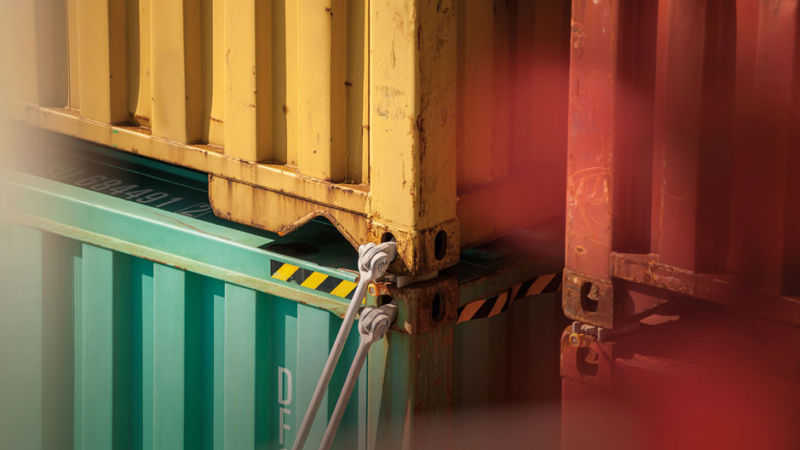The relationship between companies' supply chains and their ESG strategies is a strongly symbiotic one, and many of those within corporate board rooms are taking notice
As supply chains have become a primary growth driver and key activator for environmental, social & governance (ESG) initiatives, they have simultaneously gained importance in the board room at many companies.
As a result, visibility into supply chain actions and outcomes has catapulted to the top of many corporate wish lists — but many business leaders become frustrated when their operations and technologies don’t deliver. Still, experts say, better visibility into corporate supply chains can be achieved, but only if companies are willing to think about their sustainable supply chain initiatives in a more innovative way.
According to a September EY report on sustainable supply chains, visibility has become one of the top priorities among supply chain leaders. Of the 525 large corporations surveyed, 58% said that increased end-to-end visibility in their supply chain was among their top two priorities in both the past two years and the upcoming two years. However, despite that desire, just 37% of supply chain leaders reported achieving supply chain visibility over the past two years, indicating a large gap between the desire for more visibility and the progress many organizations are practically achieving.
Rae-Anne Alves, ESG & Sustainability Supply Chain Leader at EY Americas and co-author of the report, said that visibility is the key first step to compliance. “When companies are thinking through their supply chain and trying to make it more sustainable, they need end-to-end visibility to know is what is happening,” Alves said. “Companies are lacking the transparency that they need from their suppliers through logistics, especially in areas outside of their four walls. Achieving this transparency will give them the visibility they need across their supply chain.”
Recent research from the Thomson Reuters’ Market Research & Competitive Insights team mirrored these findings. In interviews conducted with senior leaders of US-based companies charged with tracking ESG efforts, large numbers of companies say they have established dedicated ESG efforts but collecting data and measuring those efforts remains disconnected and lacks consistency.
The issues in raising visibility
When it comes to trying to raise the visibility of supply chain practices and outcomes, many corporate leaders have run into an unfortunate reality: the difficulty of gathering and mingling data that lives in disparate systems. One public company ESG head explained that a common supply chain review pulls data from systems as broad as risk management and operations software, human resources software, and procurement and supplier-oriented software.
Combining all of these types of data into one truth remains difficult. “I don’t even know how they collect their data,” said the supply chain head of another public company. “Every vendor has their own process.”
This problem is only increasing as companies are beginning to scale up the types of data that they collect, EY’s Alves added. To take a firmer grasp on their supply chain, many companies are looking to catalog not only emissions from scope 1 (directly owned by the company) and scope 2 (indirect use of energy the company purchases), but increasingly scope 3 emissions that result both up and down the company’s value chain as well. Indeed, the more a company’s data collection scope expands, the more complex the visibility question becomes. Many supply chain-centric software providers have arisen in recent years to try and compile and display all of these data sources, however, currently, there is not a leader that has captured a substantial share of the market.
Some companies have been able to achieve more supply chain visibility, becoming sustainable supply chain “trailblazers” with an “extreme focus on transparency”
“It’s unclear yet whether there will be a provider that is able to deliver the end-to-end capability needed for a digitally network-connected supply chain,” explained Gaurav Malhotra, Partner and Americas Supply Chain Technology Leader at EY. “There are many factors that have to come together, versus just a singular platform from a control tower or visibility standpoint to enable the orchestration.”
Instead, many companies have tried to apply other technological fixes to the issue, often without much success. “Almost everything is run on Excel. It’s truly terrible,” a public company’s supply chain head told Thomson Reuters Institute. “We have very few tools for environmental stuff. Everything is reported through Excel, everything is measured in Excel, everything is rolled up in Excel and it’s extremely inefficient because we have all these different teams.”
Supplying more visibility
Still, some companies have been able to achieve more supply chain visibility. EY’s report designated certain companies as sustainable supply chain “trailblazers” and noted that one of the traits they have in common is an “extreme focus on transparency” through which “[t]hey can significantly or moderately peer into Tier 2 and 3 supply networks.”
EY’s Malhotra said these leaders often undertake two simultaneous shifts to aid this transparency. One involves automating individual supply chain functions so that they can run more efficiently and be consistently reliable. The second involves integrating those individual functions and making sure their output data is portable to enable the needed effective real-time communication, both internally and with external supply chain ecosystem partners.
Currently, he explained, most supply chain networks are “not digitally integrated in their true sense” because they operate in multiple stages. Data is processed by one organization that controls their section of the supply chain ecosystem, then it is transmitted to be able to be consumed or processed by other organizations. While Malhotra concedes that it takes “time and effort to ultimately get to a mostly autonomous state,” he believes combining, integrating, and automating these steps will be the future of supply chain management.
“What we have found is that some leading companies have moved towards an integrated process and singular platform that allows the right level of visibility, orchestration and actioning with their supply chain network partners,” Malhotra said. “Enabling trust, effective execution and accountability with the overall network in play, resulting in a highly efficient, highly integrated, differentiated and reliable supply chain.”
Leading companies are also pushing for data standardization among common supply chain suppliers, Alves added. Many sustainability frameworks are available, and increased regulatory attention continues to add more complexity. Increased standardization can make supply chain data more actionable, and auditable, potentially lowering a company’s risk profile. When asked about top supply chain priorities for the coming year, the ESG head of one public company was clear: “We want to make sure that we have auditable processes in place, that the data is sound.”
However, Alves added that for sustainable supply chain measurement and reporting businesses are “definitely not there yet.” As both public and regulatory attention in the space continue, expect that visualization into supply chain processes and data will become even more important, and leading organizations will continue to invest resources and personnel to get their supply chain data house in order.







